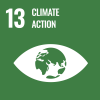The experience from the Millennium Development Goals has shown that well-defined, objectively measurable indicators can help to maintain focus on internationally agreed development goals and targets, while keeping the world informed of achievements, problem areas and emerging issues.
Looking ahead to the post-2015 development agenda, it will be important to develop a robust monitoring system that draws on traditional data collection methods and innovations in statistics and data collection to develop a monitoring framework that can measure progress on the various thematic areas.
While it is still too early to define a set of indicators and targets for the development agenda post 2015, the UN System Task Team’s Working Group on Monitoring and Indicators provides some initial thinking and recommendations on statistics and indicators for the post-2015 development agenda in its report. The intention is to provide early inputs into the discussion; so that once all goals and thematic areas have been put in place by UN member States, there will be some common ground for the identification of monitoring indicators and data sources.
One of the key lessons learnt from the MDG experience is that there is a clear need for a broad-based technical but inclusive monitoring group and for a succinct annual report for the public on progress towards the global development agenda.
The MDG experience has also shown that investments in country capacities for data collection and reporting at the national level are very important, not only to report on national progress towards the agreed goals, it is also a firm step in producing internationally comparable data, disaggregation of data and the development of new indicators.
Special attention must be given to the specific challenges of the most vulnerable and fragile countries, including LDCs, LLDCs and SIDS, which continue to face significant problems in supporting data collection and compilation. These problems will be further deepened when new fields for data collection are introduced.
The report then continues to outline guidelines for numerical target-setting and criteria for indicators. It highlights data and statistical innovations in certain thematic aspects such as measuring inequalities, indicators for sustainable development, indicators to measure governance, rule of law, peace-building, human rights and violence and conflict, among others. When thinking of these new fields however, there is a need to keep in mind the cost implications of maintaining high data quality and the need for further statistical capacity building to collect larger amounts of data. Thus, while being ambitious the monitoring system must also be realistic in terms of what can actually be measured with robust data and on a sustainable basis.
 Welcome to the United Nations
Welcome to the United Nations
















